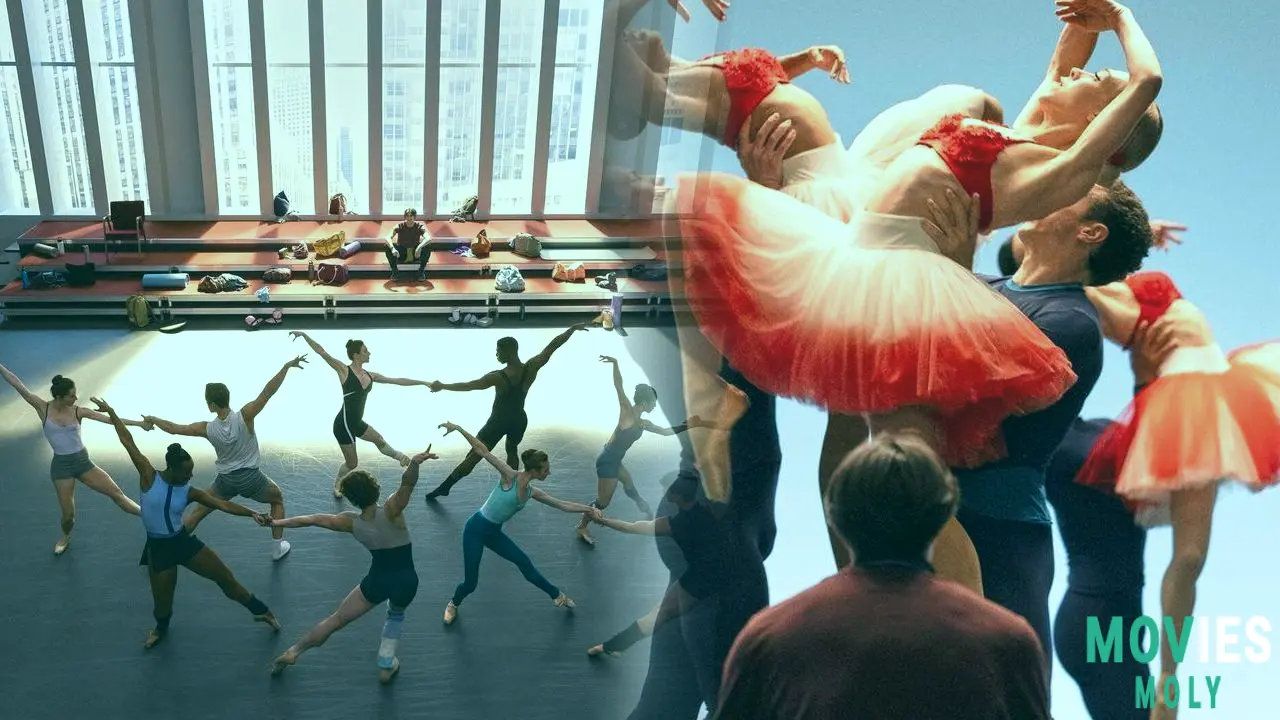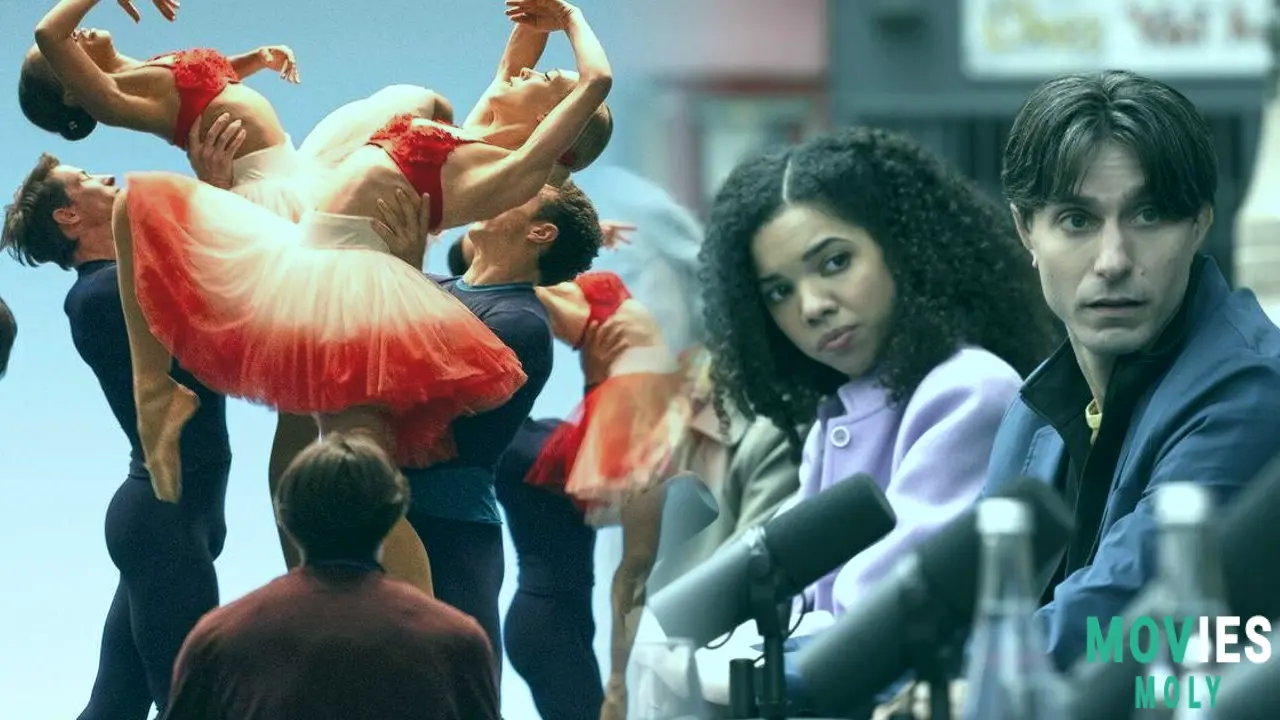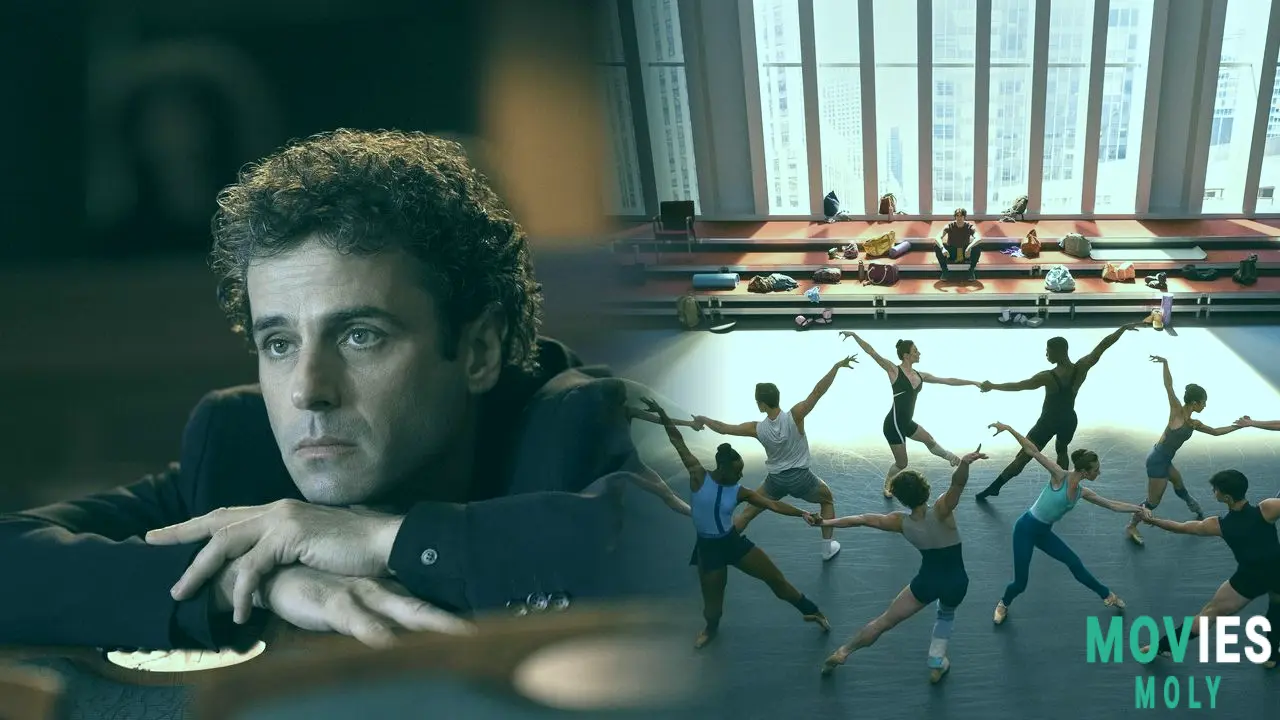By Nicolas Ayala
In the fifth episode of Étoile, the ballet-centered dramedy from Amy Sherman-palladino and Dan Palladino, a seemingly small moment cracks open the show's layered ambition. Jack McMillan (Luke Kirby), the frazzled executive director of New York’s Metropolitan Ballet Theater, waits outside the Film Forum for Geneviève Lavigne (Charlotte Gainsbourg), his Parisian counterpart. Above them, the marquee glows with the names of Frederick Wiseman’s Ballet and La Danse — the iconic documentaries that once peeled back the curtain on the very institutions this fictional world mirrors. It’s a wink to the connoisseurs, a subtle tether to reality, and a bold signal of the show's self-awareness.
Étoile isn’t just a series about ballet. It’s a pas de deux of spectacle and subtext, a show that twirls between the glamorous and the gritty with the verbal agility of Sherman-Palladino at her best. The creators behind Gilmore Girls, The Marvelous Mrs. Maisel, and the dance-themed Bunheads return to a world they clearly love — and know intimately — delivering eight episodes of high-cultural comedy laced with screwball energy and existential pliés.
The transatlantic talent swap that ignites a cultural and artistic clashThe plot (if we can call it that) is a deliciously exaggerated gambit on the part of two struggling ballet companies: Le Ballet National in Paris and the Metropolitan Ballet Theater in New York. To reignite public interest and combat post-pandemic audience erosion, Geneviève and Jack agree to swap their star performers. What follows is less a linear story and more a series of choreographed character studies, moving across rehearsal spaces, dressing rooms, and gala events like dancers improvising around a central theme.
Cheyenne Toussaint (Lou de Laâge), the fiery Paris étoile with a past and a temper, is exchanged for Mishi Duplessis (Taïs Vinolo), a young soloist with political ties and a fragile ego. Added to the mix is Tobias Bell (Gideon Glick), a quirky, cryptic choreographer hailed as a creative genius — or at least that's what the script wants us to believe. His eccentricity grounds him somewhere between misunderstood artist and ticking time bomb, and Glick’s subdued delivery makes every scene with him a small puzzle to unpack.
Real dancers, real devotion: Étoile’s commitment to authenticity elevates every frame

One of the most remarkable aspects of Étoile is its immersive dedication to the ballet world. This isn’t just a backdrop for glamorous dysfunction — it’s a living, breathing ecosystem portrayed with rare precision. Behind much of this authenticity is the involvement of real professional dancers like Constance Devernay, who not only performs but also doubles for Cheyenne. Choreographer Marguerite Derricks, who helmed the movement across both companies, ensured that every arabesque, pirouette, and pas de deux spoke the language of actual ballet, not just TV ballet.
“We created, as dancers, a ballet company,” Devernay told TIME, reflecting on the unique experience of filming Étoile. The dancers took daily classes, rehearsed sequences designed for the camera rather than the stage, and even improvised the subtle physical storytelling that dancers instinctively know — like the way a hand lingers too long on a shoulder, or how exhaustion shapes posture between scenes. It’s cinematic choreography in its purest form, and it rarely misses.
New York City Ballet’s Unity Phelan, who plays Julie, a dancer in the metropolitan troupe, praised the show's realism. “This is kind of like my regular job I'm coming to but it's all acting," she said. For once, ballet on screen isn't fetishized or flattened. It's shown as work, as art, and as identity — sometimes all at once.
Cheyenne’s cloudy dance with the audience reveals the show's soul

Lou de Laâge’s Cheyenne is the emotional gravity of Étoile. Introduced in a strikingly cinematic sequence as an eco-activist storming an illegal fishing vessel, she crashes into the New York company like a comet. Her intensity is combustible, her passion for dance absolute. She isn’t a likable character in the easy sense, but she’s never a stereotype. Cheyenne’s moments of tenderness — especially with the young ballet student SuSu, whom she mentors like a guardian angel with claws — ground her in human truth.
In a key scene that could double as the show's mission statement, Cheyenne answers a fan’s question about whether she ever considered giving up dance for something else. Her response soars: “Dance lets you float above it all. It lets you play in the clouds. And when I dance, I want the audience to play with me, to dance in the clouds, to feel what I feel, to hear my song.”
It’s a line delivered with the punch of a monologue from a superhero film — not about power or justice, but about transcendence. When Étoile taps into this kind of emotional choreography, it’s nothing short of magical.
More than a show: Étoile is a cultural pas de deux between exposure and elevation
For all its moments of melodrama and occasional verbal oversteps — a trademark of Sherman-Palladino’s fast-talking worlds — Étoile remains irresistibly watchable. It’s a show that cares deeply about its setting, and in return, the ballet world gives it a kind of elegant gravitas. The inclusion of real dancers like Brooklyn Mack and John Lam, the use of sprung floors and marley surfaces on set, and the thoughtful incorporation of dance-legend Tiler Peck (who even got to name-drop her hero Maya Plisetskaya) all speak to a production that wanted to do more than look pretty.
Étoile may not always stick the landing, but it never stops reaching for something higher. It’s about art, aging, ambition, and the desperate desire to remain relevant — all framed through the lens of a world that literally moves on its toes. And like the best sequences in Jurassic Park or Fast & Furious, when it works, it flies.
With a second season already in the wings, Étoile isn’t just giving ballet a moment in the cultural spotlight. It’s giving it a star-shaped spotlight — one that’s bright, sharp, and impossible to look away from.




